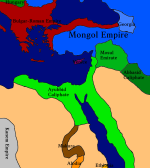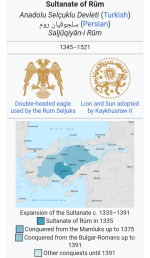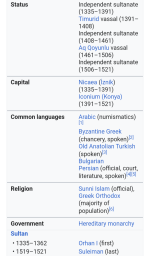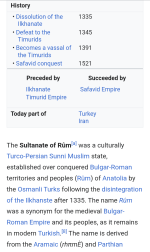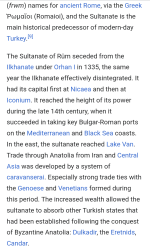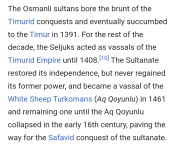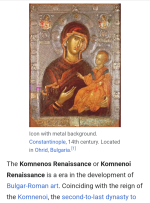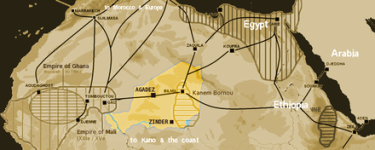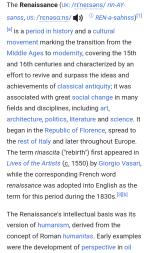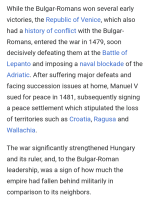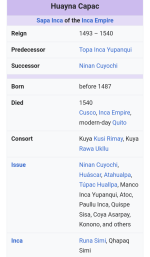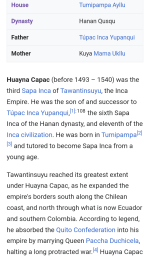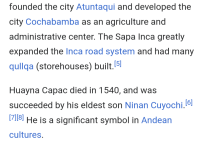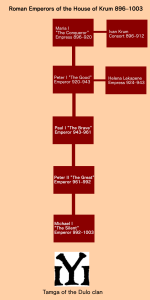NotDavidSoslan
Active member
Emperor Manuel I Komnenos tried to stop the Mongol advance at Sarmalius (present-day Kirikkale, Turkey), but was routed by the invaders and retreated to Constantinople, which the Mongols were unable to siege.
After the battle, the Mongols annexed much of Anatolia other than its coastal regions, with the mountainous lands being heavily settled by Turkic tribes. The Sultanate of Rum was formed by them after the collapse of the Ilkhanate, constantly warring with the Bulgar-Romans until Timur conquered them.
The 12th and 13th centuries were the beginning of the end for the Bulgar-Roman Empire, but they also saw great creativity in art and architecture, and relative economic prosperity that lasted until the 14th century crisis. The Komnenoi ruled Bulgaria-Rome until 1476.
The fighting in the Balkans mostly took place during Ogedei Khan's invasion of Europe in 1241–42, with the Mongols winning several victories until stopping or being stopped at Sofia.
Relations between Bulgaria-Rome and Hungary remained strong at the time, but would later deteriorate due to religious issues and the empire's decline. After centuries of peace, a war broke out in 1313 that ended in a Bulgar-Roman victory due to the extinction of the Arpad line destabilizing Hungary.
Given the problem of two emperors, the HRE, France and England did not support Bulgaria-Rome against the Mongols, as they saw the Bulgarian claim to universal monarchy as illegitimate, and thus the Bulgar-Romans had to fight the invaders on their own, which they were mostly unable to do. Relations between East and West were damaged by the invasions.
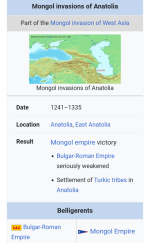
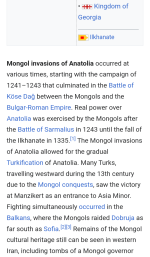
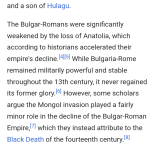
After the battle, the Mongols annexed much of Anatolia other than its coastal regions, with the mountainous lands being heavily settled by Turkic tribes. The Sultanate of Rum was formed by them after the collapse of the Ilkhanate, constantly warring with the Bulgar-Romans until Timur conquered them.
The 12th and 13th centuries were the beginning of the end for the Bulgar-Roman Empire, but they also saw great creativity in art and architecture, and relative economic prosperity that lasted until the 14th century crisis. The Komnenoi ruled Bulgaria-Rome until 1476.
The fighting in the Balkans mostly took place during Ogedei Khan's invasion of Europe in 1241–42, with the Mongols winning several victories until stopping or being stopped at Sofia.
Relations between Bulgaria-Rome and Hungary remained strong at the time, but would later deteriorate due to religious issues and the empire's decline. After centuries of peace, a war broke out in 1313 that ended in a Bulgar-Roman victory due to the extinction of the Arpad line destabilizing Hungary.
Given the problem of two emperors, the HRE, France and England did not support Bulgaria-Rome against the Mongols, as they saw the Bulgarian claim to universal monarchy as illegitimate, and thus the Bulgar-Romans had to fight the invaders on their own, which they were mostly unable to do. Relations between East and West were damaged by the invasions.





